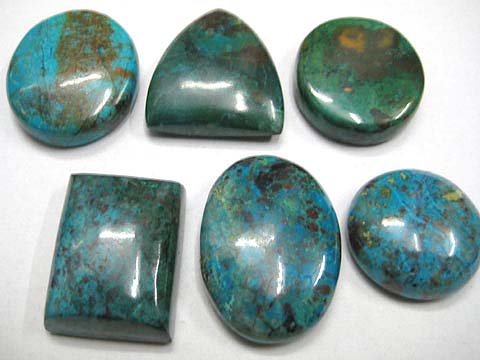 |
Crysocola Gemstones Chrysocolla has an attractive blue-green colour and is a minor ore of copper, having a hardness of 2.5 to 3.5.
[edit] Name and discovery
The name comes from the Greek chrysos, "gold", and kolla, "glue", in allusion to the name of the material used to solder gold, and was first used by Theophrastus in 315 BCE.
[edit] Formation and occurrence
It is of secondary origin and forms in the oxidation zones of copper ore bodies. Associated minerals are quartz, limonite, azurite, malachite, cuprite, and other secondary copper minerals.
It is typically found as glassy botryoidal or rounded masses and crusts, or vein fillings. Because of its light color, it is sometimes confused with turquoise. Commonly it occurs only as pourous crusts unsuitable for gem use, but high quality, gem grade chrysocolla can be translucent and is highly prized.
Notable occurrences include Israel, Democratic Republic of Congo, Chile, Cornwall in England, and Arizona, Utah, New Mexico and Pennsylvania in the United States. Chyrsocolla is a hydrous silicate of copper, occurring massive, of a blue or greenish blue color and is more appropriately a mineraloid than a true mineral. Most of the time it is amorphous meaning that it does not have a coherent crystalline structure.
Chrysocolla forms in the oxidation zones of copper rich ore bodies. Pure chrysocolla is soft and fragile and cannot be used for making jewelry. Druzy Chrysocolla is a rock composed of agatized chysocolla with a crust of small sparkling quartz crystals in small cavities. Chrysocolla can also have a turquoise color and can substitute the more precious stone
.
It is available in green-blue color with a luster that is earthy to dull or vitreous and waxy. With a variable hardness of 2 to 4, Chrysocolla is found in regions of: Arizona in Utah, New Mexico and Pennsylvania in USA, Isreal, Zaire and England.
|